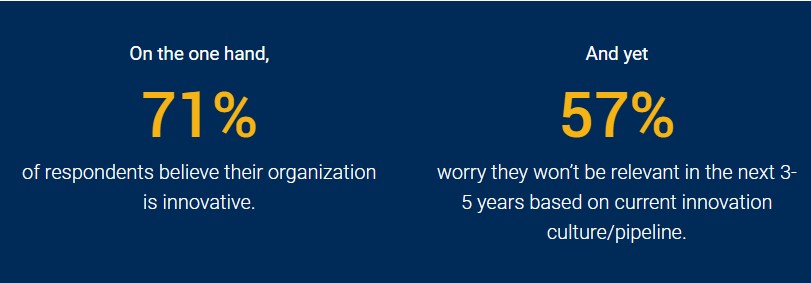By Adam Robyak, field CTO & principal engineer, Dell Technologies
To keep up with changes and battle headwinds coming, it’s more important than ever to innovate. The question is how well and how quickly are organizations across the globe able to do that. Dell Technologies recently launched the Innovation Index, a benchmark study that assesses organizations’ innovation maturity across the globe. The study shows that true innovation leaders possess resilience which makes them two times more likely to accelerate innovation during a recession, inflation, and economic uncertainty. This allows them to emerge stronger and more competitive. So, what can we learn from them?
I recently sat down for a conversation with Dell’s global chief technology officer, John Roese, and Helen Yu, founder and CEO of Tigon Advisory, to understand what we can learn from leaders on how to cultivate innovation resilience. It turns out, returning to the playground, digging into the sandbox and “playing well” with others, while defining business outcomes and establishing clear goals, can help kick innovation into high gear.

Building a culture of innovation maturity
I was struck by the fact that although we were discussing innovation ‘maturity’ during our chat, themes from childhood kept coming up. Children have the boldness to experiment, try new things and model organic methods for discovery. When asked what advice Yu and Roese have for leaders, they gave advice for building an innovation culture.
1. Walk before crawling. When asked what innovation is at its core, Roese spoke about the value of both pragmatic and aspiration innovation. “Innovation is always either doing something new or making something better or expanding into a new area. It’s about realistically understanding the art of the possible based on your current capabilities or the realistic resources you’ll have to apply to it.”
2. Keep learning and understand your ultimate goal. Roese offered an additional perspective to this more cautious side of innovation, saying that research, while critical to innovation itself, is not synonymous with breakthrough discovery. This is an important distinction for leaders. “Experimenting with generative AI is not innovation, it is research. Learning is a prerequisite for innovation, but the reality is CIOs (chief information officers) are looking at their team trying to understand how many of them have aligned innovation to a business objective that has a measurable ROI (return on investment).”
3. Chart a course for adventure knowing what’s in your toolbox. Pragmatic innovation begins with a clear intention and a holistic framework of people, processes and technology. As Yu pointed out, “Innovation is actually a business-wide imperative that needs to be looked at strategically. Innovation needs to be human-centered and needs to be expandable and scalable”. Although people are at the core of innovation, tech also plays a critical role, regardless of industry. According to the Innovation Index, tech is seen as a key enabler by 86% of organizational leaders, but 57% believe their tech isn’t cutting edge and fear falling behind competitors.
4. Be bold. A recurring theme of innovation is disruption. Yu described the value of a solid process, saying that today, being innovative requires challenging the status quo. “There are only two outcomes when it comes to innovation, disrupt or to be disrupted. I view that as an exciting opportunity. It is exciting to think that we can choose growth, we can choose new scale or choose to win. If we break that down into smaller pieces, then have a framework to link the innovation and concepts to actionable insights.”
5. Go back to the sandbox. Nearly half of business development managers don’t regard IT as an important partner in business decisions. This can be a significant barrier to innovation. Yu’s advice: “Go back to the sandbox of our childhood! Work closely with IT from the very beginning, meeting on a regular cadence and sharing in joint decisions. Working together, they can adapt to the changing circumstances, developing solutions that meet the needs of the business.”
6. Use speed to win. Just like a game of tag, the competitive edge can come down to speed and agility. As Roese said, “The technology ecosystem is in constant motion and is constantly reinventing, there’s a constant march forward, and it tends to accelerate and create even greater disruption. The best thing you can do the next time you have a problem to solve or an opportunity to pursue is to do it the new way, do it in an innovation framework, as opposed to a traditional approach, and move faster.”
7. Jump in the pool. Both Roese and Yu agree that without an intentional and progressive approach to innovation, stagnation looms. It’s necessary according to Roese to “jump in the pool” and find a new way to work. Be bold, participate, and disrupt the traditional methods already tried. Yu’s key advice was to strategize, simplify and synergize. “Strategize your investment to align innovation within a common goal and turn that into impact. Simplify your IT and business processes to improve efficiency. Synergize IT and business to create a culture [of] learning and collaboration.”
Perhaps between the pragmatic and aspirational, and the desire to simplify and be bold simultaneously, innovation is a balance beam that those with a strong center can withstand despite shaky ground. Intention, a solid framework and collaborative partnerships can create an atmosphere for innovation resilience. And the leaders who gain the most traction get to stay in the game the longest.
To learn more about Dell’s Innovation Index, click here.

